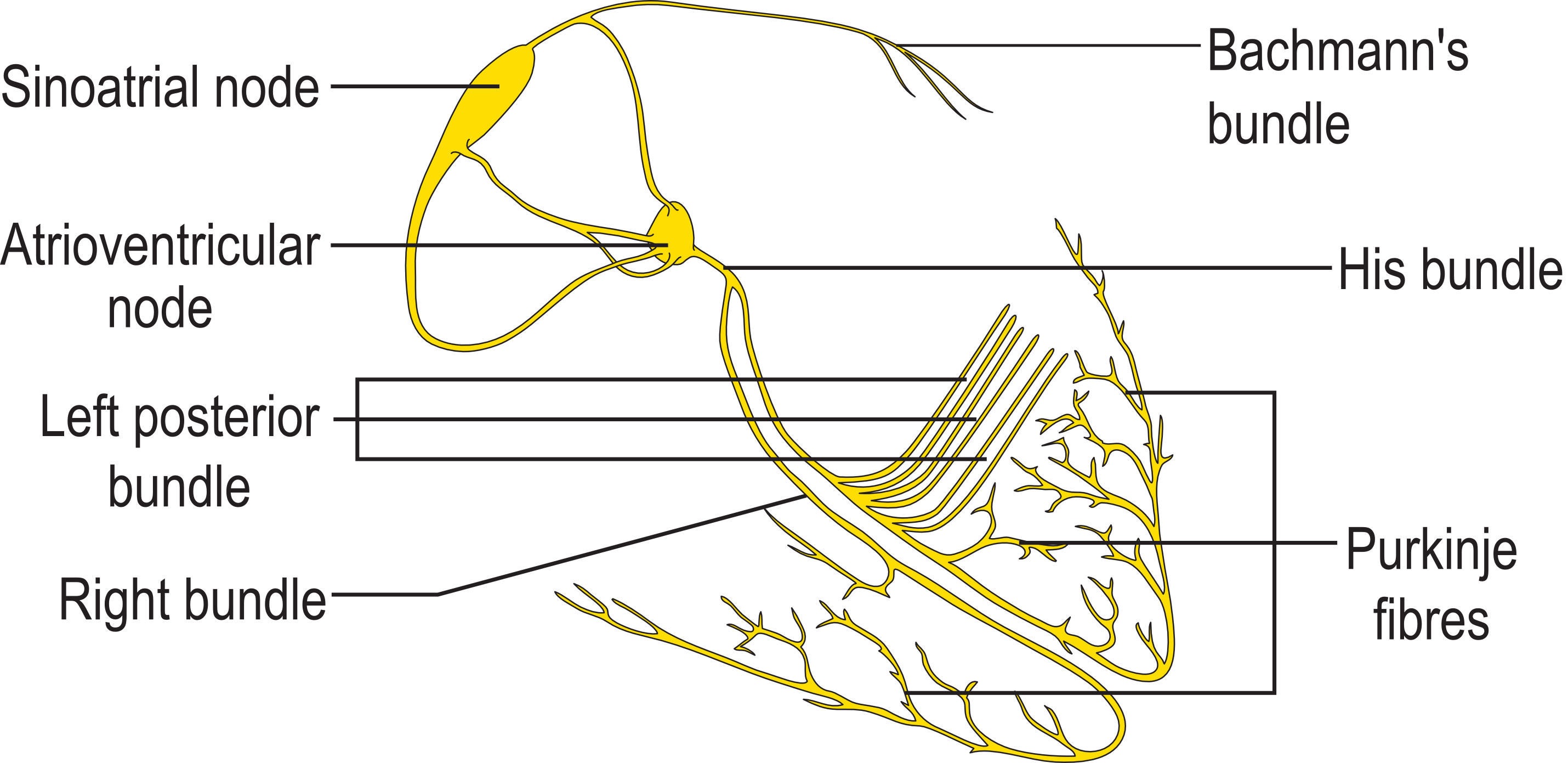Left bundle branch block pathophysiology
Jump to navigation
Jump to search
|
Left bundle branch block Microchapters |
|
Differentiating Left Bundle Branch Block from other Diseases |
|---|
|
Diagnosis |
|
Treatment |
|
Case Studies |
|
Left bundle branch block pathophysiology On the Web |
|
American Roentgen Ray Society Images of Left bundle branch block pathophysiology |
|
Risk calculators and risk factors for Left bundle branch block pathophysiology |
Editor-In-Chief: C. Michael Gibson, M.S., M.D. [1]; Raviteja Guddeti, M.B.B.S. [2]; Aarti Narayan, M.B.B.S [3]
Please help WikiDoc by adding content here. It's easy! Click here to learn about editing.
Pathophysiology
Normal Conduction
- The normal cardiac conduction proceeds in a way so as to allow time for the atrium to relax during atrial diastole.
- The electrical impulse generated in the SA node travels through the internodal pathways towards the AV node.
- The conduction through the AV node is slowed down as it travels through it. This decrease in velocity of conduction allows time for the atrium to contract ahead of the ventricle so that the blood from the atria can fill up the ventricles through the atrio-ventricular valves.
- As the impulse flows through the compact AV node, it rapidly conducts through the ventricular myocardial cells. Once the depolarization is complete, the ventricle relaxes during diastole in preparation for the next impulse.

Anatomy
- The conduction system of the heart consists of specialized cells designed to conduct electrical impulse faster than the surrounding myocardial cells.
- Anatomically, the AV node is divided into three regions as follows:
- Transitional cell zone: This is the region where the internodal atrial pathways merge with the compact AV node.
- Compact AV node: This region is located at the apex of the triangle of Koch, which is formed by the ostium of coronary sinus, tricuspid annulus and the tendon of Todaro.
- Penetrating portion of the AV bundle: This region enters the tendon of Todaro and runs within the fibrous body of the membranous interventricular septum and eventually divides at the crest of the muscular interventricular septum into right and left branches.
- The left bundle branch penetrates the membranous portion of the interventricular septum and divides into several smaller branches. Parts of the left bundle branch include a pre-divisional segment, anterior fascicle/hemibundle and posterior fascicle/hemibundle. Rarely a median fascicle is present in some hearts.
- The anterior fascicle supplies the anterior papillary muscle and the Purkinje network of the antero-lateral surface of the left ventricle.
- The posterior fascicle supplies the posterior papillary muscle and the Purkinje network of the postero-inferior surface of the left ventricle.
- Left bundle branch receives its blood supply from left anterior descending artery.

Pathophysiology
- Unlike right bundle branch block (RBBB), left bundle branch block completely modifies the way of depolarization of the conduction system of the heart. In LBBB the activation of the interventricular septum is from right to left due to uninterrupted conduction in the RBB.
- Then the electrical impulse propagates inferiorly to the left resulting in delayed depolarization and activation of the left ventricle especially the left lateral wall.[1]
- In LBBB the right to left activation of the septum causes a small negative deflection (Q wave) in lead V1 and a positive deflection (R wave) in lead V6. Right ventricle depolarizes earlier than the left ventricle giving an R wave in lead V1 and an S wave in lead V6. Subsequent delayed depolarization of the left ventricle results in an S wave in lead V1 and another R wave in lead V6.